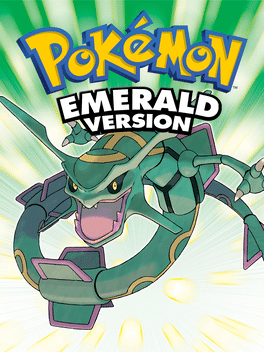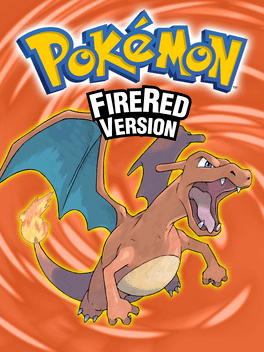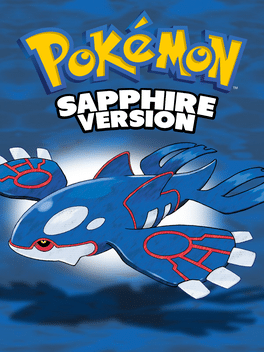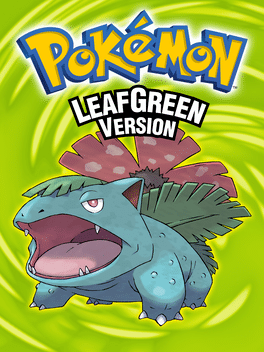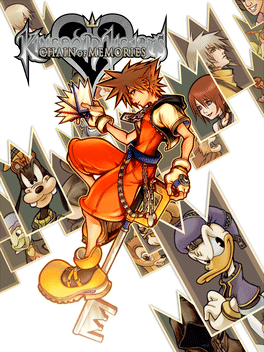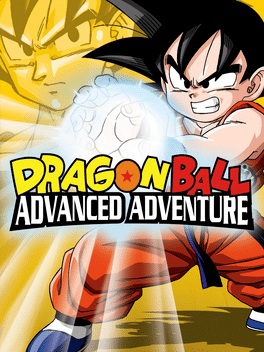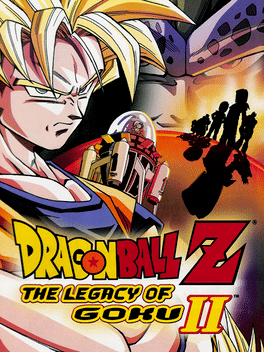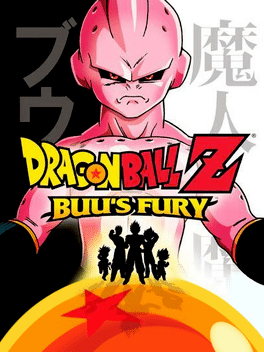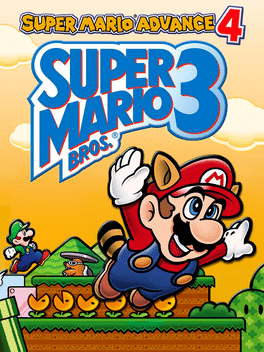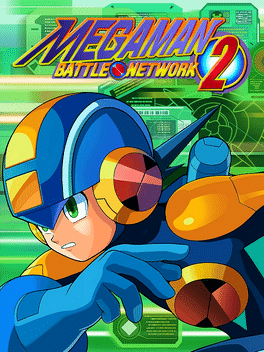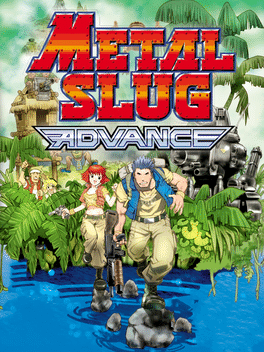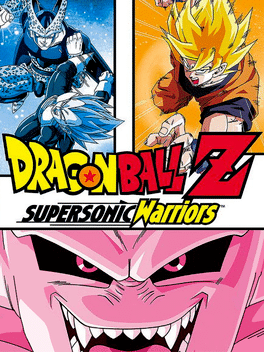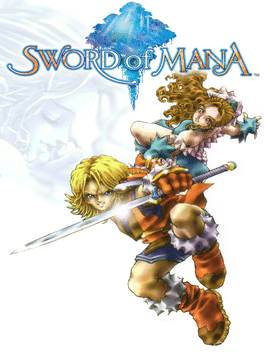Most Popular Game Boy Advance Games
-
Pokémon Emerald Version
2004
star 7.3Pokémon Emerald Version is a sister game to Pokémon Ruby and Sapphire. Emerald Version provided the main storyline with more depth and length, as well as making small aesthetic changes to the world and adding unique animations for each Pokémon. -
Pokémon FireRed Version
2004
star 8.3Pokémon FireRed Version and Pokémon LeafGreen Version are a pair of core series Generation III games that are set in the Kanto region. They were released in Japan on January 29, 2004, in North America on September 9, 2004, in Australia on September 23, 2004 and in Europe on October 1, 2004. As the first remakes in the Pokémon franchise, the games revisit the original pair of Pokémon games, Pokémon Red and Green Versions, and so feature all of the characters, plot elements, and challenges of them, but with several important upgrades to bring them up to speed with other Generation III games. The Game Boy Advance Wireless Adapter was initially included with the games when they were first released, eliminating the need for Game Link Cables when trading between the two games (and later Pokémon Emerald Version). In later copies, it was sold separately. FireRed and LeafGreen went on to become the second best-selling games of the Game Boy Advance, only behind Pokémon Ruby and Sapphire Versions. They also received -
Pokémon Ruby Version
2002
Pokémon Ruby Version
2002
star 8.1Sequel to Pokémon Gold and Silver Versions (1999), Pokémon Ruby and Sapphire Versions offer 135 new Pokémon, more complex battling and training systems, new crime organizations, a longer and more story-focused campaign and upgraded graphics to create a new and technically improved Pokémon experience. -
Pokémon Sapphire Version
2002
star 8.2Sequel to Pokémon Gold and Silver Versions (1999), Pokémon Ruby and Sapphire Versions offer 135 new Pokémon, more complex battling and training systems, new crime organizations, a longer and more story-focused campaign and upgraded graphics to create a new and technically improved Pokémon experience. -
Pokémon LeafGreen Version
2004
star 7.6Pokémon LeafGreen Version and Pokémon FireRed Version are a pair of core series Generation III games that are set in the Kanto region. They were released in Japan on January 29, 2004, in North America on September 9, 2004, in Australia on September 23, 2004 and in Europe on October 1, 2004. As the first remakes in the Pokémon franchise, the games revisit the original pair of Pokémon games, Pokémon Red and Green Versions, and so feature all of the characters, plot elements, and challenges of them, but with several important upgrades to bring them up to speed with other Generation III games. The Game Boy Advance Wireless Adapter was initially included with the games when they were first released, eliminating the need for Game Link Cables when trading between the two games (and later Pokémon Emerald Version). In later copies, it was sold separately. FireRed and LeafGreen went on to become the second best-selling games of the Game Boy Advance, only behind Pokémon Ruby and Sapphire Versions. They also received -
Kingdom Hearts: Chain of Memories
2004
star 7.9Kingdom Hearts: Chain of Memories is the second game in the Kingdom Hearts series. It is a direct sequel to Kingdom Hearts and exclusive to the Game Boy Advance. It was published by Square Enix and developed by Jupiter, and was released in 2004. Chronologically, it is the third game in the timeline after Kingdom Hearts Birth by Sleep and Kingdom Hearts, and takes place during Kingdom Hearts 358/2 Days. -
Dragon Ball Z: The Legacy of Goku
2002
star 6.5Dragon Ball Z: The Legacy of Goku takes you on an incredible journey to protect the universe from the evil Frieza once and for all. The game follows an RPG style, with battle elements designed similarly to the style of the cartoon, with fireballs, quick moves and more. As the story progresses, you will learn more about the history of the cartoon, meeting a collection of crazy characters and fighting one-on-one battles over long distances as well as close combat. The ten hour quest will take you to Master Roshi's Island, throughout Earth and beyond. Plus an in-game clock keeps tabs on your time limit to complete the game. -
Dragon Ball: Advanced Adventure
2004
star 7.9Join Goku in his very first epic adventure as he defends the earth from the relentless Red Ribbon Army. Start down his path to power, and help turn an ordinary boy into the ultimate champion. -
Dragon Ball Z: The Legacy of Goku II
2003
star 7.4Dragon Ball Z: The Legacy of Goku II was released on June 17, 2003. The plot of the game picks up where The Legacy of Goku left off, and continues until the end of the Cell Games Saga when Gohan defeats the evil android Cell. The game introduced several new concepts to the series. The first was transformations, which allowed characters to become temporarily stronger, at the cost of slowly draining their energy. It also introduced the scouter, which allowed players to look up the stats of other characters in the game, as well as basic information about them. The game also introduced charged melee attacks, which allowed characters to unleash a powerful physical strike after a short charging period. The game also allowed characters to further supplement their stats with capsules that were scattered around the game world. Despite being titled "The Legacy of Goku" this game featured the most limited play as the character Goku. Due to the game's success, a second version was released titled Dragon Ball Z: The Legacy of -
Dragon Ball Z: Buu's Fury
2004
star 7.1Dragon Ball Z: Buu's Fury is the third and final game in the series. It was released on September 14, 2004 in North America. The game focuses on the final parts of the Dragon Ball Z series (season 7), namely the battles with Majin Buu. The game added several new additions to the series. First, the game added equipment, which could be equipped to characters to alter their stats and provide various other benefits. The game also allowed players to allocate their own stat points, of which three were given per level. Also added was the ability to block by holding the R button, and also to energy block by holding the B button while blocking. Using the energy block slowly drains the user's energy gauge. Both techniques greatly decrease the amount of damage that is received from attacks. The game also added various other features such as fusions and the ability to transform into a Super Saiyan 3. Although many features were added, the ability to use charge attacks by holding and releasing the A button was eliminated. The -
Super Mario Advance 4: Super Mario Bros. 3
2003
star 8.8Super Mario Advance 4 is a GBA remake of Super Mario Bros. 3 for the NES. Super Mario Advance is a four-part series for the GBA with Super Mario games of the NES and SNES era. The remakes came with adjusted graphics, sound and additional content. Each game of the series includes additionally the arcade-classic "Mario Bros" which can be played in multiplayer via link cable. -
Mega Man Battle Network 2
2001
star 8Enter the futuristic universe of Mega Man.EXE in this new adventure in the Battle Network series. Join him in his battle to fight cyber crimes in this mega role playing adventure. Now, there's a new net crime organization in town and its computer hacking has created a virus that's quickly gaining momentum. It's up to Mega Man.EXE, his pal Lan and friends to join the Net-Battlers and win this new cyber battle. Stop it before it spreads! -
Sonic Battle
2003
Sonic Battle
2003
star 7Sonic and pals are gearing up for some brawling action! Fight as one of nine characters including Sonic, Tails and Shadow! Knock 'em dead with special attacks and team-based assaults. Create and train fighting partner for 2-on-2 battles. Duke it out with your friends in 4 player battles. It is the second fighting game in the Sonic the Hedgehog series, the first being Sonic the Fighters. It is also the first Sonic fighting game to be on a handheld. -
Crash Bandicoot: The Huge Adventure
2002
star 7.1Tired of endlessly doing battle with meddling bandicoots, the nefarious Dr. Neo Cortex shrinks the entire Earth, and Crash and Coco along with it, to the size of a wumpa fruit. Luckily, Coco invents a machine to reverse the effects, but she needs crystals from around the world to power it. Crash must retrieve the crystals to help return the entire planet to its natural state. Experience Crash's biggest adventure yet, with gameplay modes ranging from side-scrolling to 3D chase levels to aerial dogfight combat sequences. Battle your way through over 20 huge levels and six unique locations to defeat Cortex and save the world. -
The Legend of Zelda: A Link to the Past & Four Swords
2002
star 9.1The Legend of Zelda: A Link to the Past & Four Swords features two games, a port of the SNES game The Legend of Zelda: A Link to the Past and a new multiplayer adventure called Four Swords. -
Metal Slug Advance
2004
Metal Slug Advance
2004
star 8.3Now you can have all the 2D arcade action of Metal Slug in the palm of your hand, because Metal Slug Advance has arrived on the Game Boy Advance. Through five action-packed missions, you must move out on foot or in slug vehicles across rugged terrain and underwater bases. Your objective is to rescue hostages by destroying enemies and solving strategic puzzles. Completing your missions becomes easier when you collect more than 100 types of E-cards, which enhance your character's abilities. -
Dragon Ball Z: Supersonic Warriors
2004
star 6.9The Aerial Assault Begins! Pick your DBZ Dream Team and shake the Dragon Ball Z universe with free-flight combat! Bombard opponents with punishing attacks on the ground and in the air. It's thunderous DBZ fighting unlike anything you've ever seen before! -Fight as one of 15 characters -Uncover alternate endings to famous DBZ storylines -Survive tag team mayhem for 2 players via Game Boy Advance Game Link Cable -Upgrade fighting skills as you advance -
Mega Man Battle Network 3 White
2002
star 8.8Using an RPG style, you must guide Mega Man through various levels defeating enemies along the way and collecting the various chips to upgrade Mega Man's weapons and other items. Exclusive to this, the White Version, are specialy developed chips (Giga Class chips) that only the White Version of Mega Man can use. You can also trade various chips between players using either Blue or White versions of BN3. Other differences include exclusive enemy bosses in areas and a unique battle style for each games version that Mega Man can use. -
Sword of Mana
2003
Sword of Mana
2003
star 7.6The Mana Tree Needs Defenders! The location of the Mana Tree - wellspring of all life - has long been lost to legend. Many centuries have passed, and the Granz Realm's Dark Lord is searching for the secrets of the ancient tree so that he can control the source of Mana. Now, a young hero and heroine must come together to defeat the evil that threatens both the mystical tree and the world itself. Choose your hero! Guide a battle-hardened gladiator on his quest to avenge the deaths of his parents! ...Or guide a young girl, one of the last survivors of the Mana Clan, as she confronts the past that haunts her. Experience the saga of these two heroes as their stories weave together and they join forces to protect the Mana Tree from the powers of darkness. -
WarioWare: Twisted!
2004
WarioWare: Twisted!
2004
star 8.2After accidentally discovering spin technology, Wario reassembles the developers at WarioWare, Inc. to make a new set of wild minigames. WarioWare: Twisted! maintains the fast-paced style of gameplay from the original WarioWare and introduces a new gyro sensor that lets you control the gameplay by rotating the Game Boy Advance SP left and right. The new controls play into more than 200 minigames. Play through them all to unlock souvenirs, such as bonus games, figurines, and instruments.
